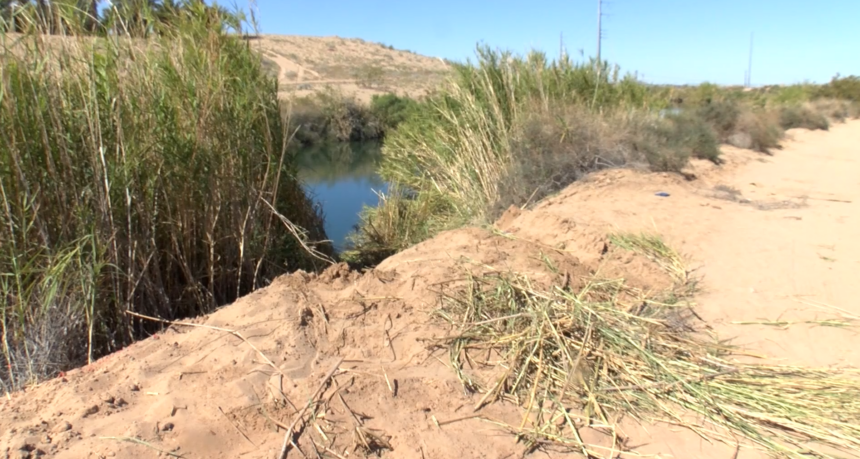|
Article audio is made possible by CAST11 Prescott Podcast Network. A Talking Glass Media production.
|
Ken Lain of Watters Garden Center of Prescott, Arizona shared the Plant of the Week last Friday. Here is your breakdown on how to grow Rosemary Creeper.


Imagine growing Rosemary that tumbling over a wall or spreading across a dry rock lawn. This tough little gem is the perfect plant for garden walls, pots, banks, or a dry, sunny patch of ground in the garden. A superb groundcover for hot, dry locations, its habit is low and mounds just 12″ inches high, and spreading vigorously. Deep blue flowers arise in great masses that are both deer and pest-resistant.


Creeping Rosemary forms a beautiful carpet of deep blue flowers backed by herbal green foliage for an attractive ground cover. This waterwise evergreen is outstanding for cascading from retaining walls or planters and is very useful in erosion control on banks and slopes. The aromatic leaves are often used as a flavorful culinary seasoning.
Its Latin name, Rosmarinus officinalis, means ‘dew of the sea,’ that most associate with Mediterranean cooking.
- Botanical Name Rosmarinus officinalis
- Common Name Rosemary
- Plant Type Perennial evergreen herb
- Mature Size 12″ inches x 5′ feet wide
- Sun Exposure 6+ hours Full sun
- Soil Type Sandy loam
- Soil pH 5 to 10 pH
- Bloom Time March to May, often in Fall
- Flower Color Blue, white, and pink
- Hardiness Zones 7 to 11 USDA
- Native Area Mediterranean
How to Plant
1.Dig hole 2-3 times the width of the container but the same depth.
2. Score the root ball sides and bottom with a utility knife or pruners and plant in the planting hole.
3. Blend Watters Premium Mulch into the native soil at 1 part mulch with two parts soil dug from the hole and pack firmly around the roots.
4. Sprinkle 7-4-4 All Purpose Plant Food around the planting area.
5. Prevent ‘Transplant Shock’ by adding Watters “Root & Grow” to your water at 2-week cycles for the first 2 months.
6. Use the remaining Watters Mulch inside the tree well as a top dressing. This will keep weeds down, insulate roots from heat and cold, and keep the roots moist.
Light
To keep Rosemary happy, give it 6+ hours of full sunlight each day. When growing it indoors, place it in a south-facing window for bright light.
Soil
Grow Rosemary in loamy, well-draining soil. This plant is native to the rocky hillsides of the Mediterranean and doesn’t do well if its roots stay soggy. Test the planting hole by filling it with water in the morning. If water is still pooling in the dug hole at the end of the day, you have drainage issues that will need more work.
Water
Water newly planted Rosemary regularly with a garden hose for at least one month (2 months in Summer). Automatic irrigation systems may not be sufficient initially. Water frequency will vary according to the season, exposure, and plant size.
- April – Oct Rosemary should be irrigated 2 x weekly.
- Nov – Mar Rosemary should be irrigated 2 x monthly.
Fertilizer
Feed 4x Times per Year with either 7-4-4 All Purpose Plant Food, Soil Sulfur, or Humic. Here’s the recommendation by season:
Spring = 7-4-4 All Purpose Food + Soil Sulfur
Summer = 7-4-4 All Purpose Food + Humic
September = 7-4-4 All Purpose Food
December = 7-4-4 All Purpose Food
Propagating Rosemary
You will make things far easier on yourself if you start with a nursery-grown plant. Rosemary can take years to fill in, so expect to pay more for a mature plant than for a small rosemary start.
If you would like to start your own rosemary plant, the best option is to start cutting. Rosemary seed can be difficult to germinate and often do not grow true to their parent. It’s much faster to start with a cutting, and you will be sure of what type of plant you will get.
Snip about a 2″ inch cutting from the soft, new growth of an established plant.
Remove the leaves from the bottom inch, then dip the cut tip into a Rooting Powder’ and place the dipped end into a container of dampened seedling potting soil. Both are sold here at Watters Garden Center.
Place the container in a warm spot with indirect sunlight. Mist the cuttings daily and make sure the soil does not dry out.
In about 2 to 3 weeks, test for root growth by very gently tugging on the cuttings. Once the cuttings have roots, transplant them into individual pots about 3-4″ inches in diameter. Pinch off the very top of the cutting to encourage it to develop branches.
Common Pests/ Diseases
The biggest problem with growing Rosemary indoors is getting the humidity level right. High humidity and poor air circulation commonly result in Powdery Mildew on rosemary plants. Powdery Mildew is a white, powdery fungus that develops if the surrounding air is humid and there is not enough air movement.
Bugs to look for in spring or summer are aphids and spider mites. These pests seem to live on houseplants through winter. Catching an infestation early makes for easy control. Triple Action by Watters Garden Center cures both Powdery Mildew and most insects quickly.
Better Together: Companion Plants for March
Prescott Pansy
Giant 3″ flowers thrive in extreme March gardens. Large, velvety blooms dazzle with radiant colors of blue, violet, yellow, and variations of stripes that look like smiling faces and love being planted in March.
Fanciful Forsythia
This gorgeous shrub explodes with masses of solar yellow flowers followed by shiny green leaves. Every home should have one for sheer beauty, fall color, and gentle natural care.
Oklahoma Redbud
At just 16′ feet tall, this local native is super easy to grow. Vibrant, red flowers cloak the branches of early Spring. Luscious heart-shaped leaves emerge with a soft pink tinge that matures to a vibrant green.
Mountain Heath
This impressive bloomer is covered with flowers right now. Animal resistive with fragrance all pollinators adore. A knee-high evergreen is super easy to care for in the ground or containers.
Get more gardening tips from Watters Garden Center in the Mountain Gardener Column on Signals A Z.com.


Get Updates from Watters Garden Center
Source link
Staff , www.signalsaz.com
Signals AZ , 2024-04-01 16:00:26
Categories: Mountain Gardener,how to grow,Ken Lain,plant of the week,Rosemary creeper,The Mountain Gardener,Watters Garden Center
Tags:

































































































































































































